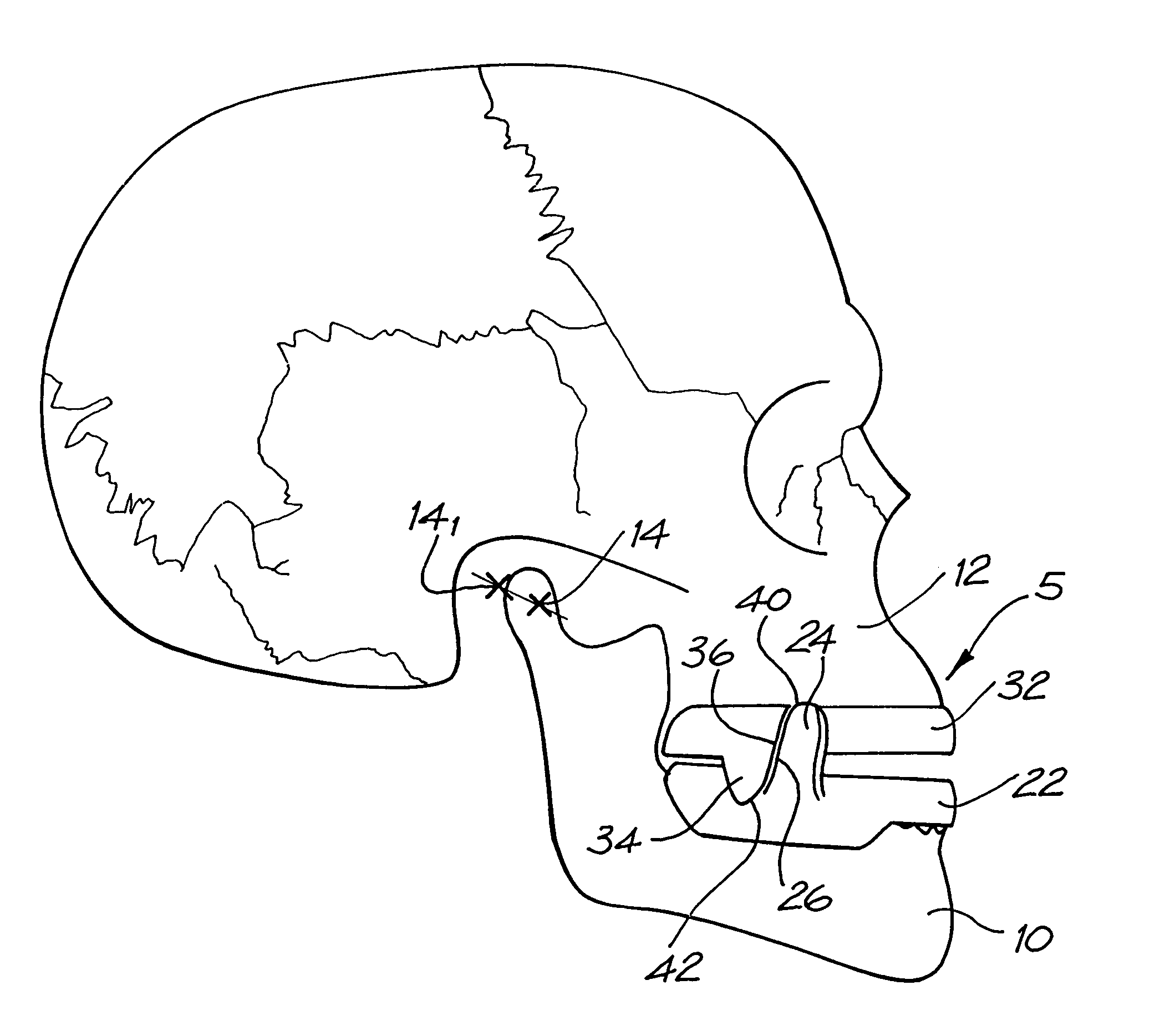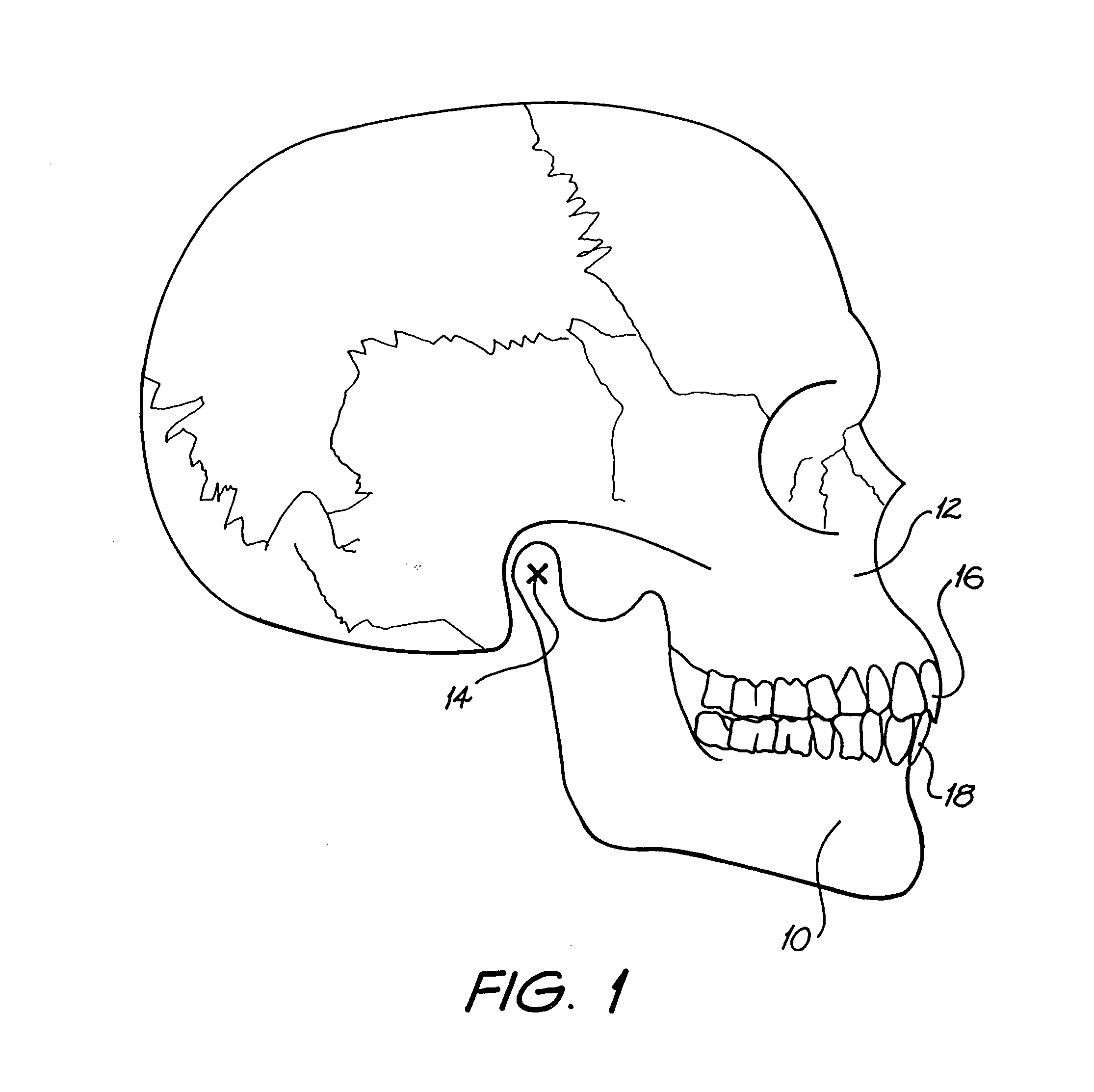Mandibular advancement device
- Summary
- Abstract
- Description
- Claims
- Application Information
AI Technical Summary
Benefits of technology
Problems solved by technology
Method used
Image
Examples
Embodiment Construction
[0037] In FIG. 1, the normal bite (occlusal) position for the teeth is shown, and particularly the relationship between the upper incisors 16 and the lower incisors 18. In performing mandibular advancement treatment, it is desired to advance a lower jaw 10 to a position relative to the upper jaw 12 as shown representatively in FIG. 2a. The degree of advancement can depend upon clinical requirements. The relative displacement of the hinge point 14 can be seen to have both horizontal and vertical components. Advancement of the lower jaw 10 carries the tongue forward so that (particularly in sleep) there is a greatly reduced tendency for the tongue to impinge on the pharynx. The degree of advancement can be from the reflex or habitual closing path to the anterior border path.
[0038]FIG. 2b shows the relative location of the lower jaw for degrees of jaw opening and advancement. Line A1A2 represents the arc of opening from the fully protruded position centred on the point Ax. Line B1AB0-...
PUM
 Login to View More
Login to View More Abstract
Description
Claims
Application Information
 Login to View More
Login to View More - R&D
- Intellectual Property
- Life Sciences
- Materials
- Tech Scout
- Unparalleled Data Quality
- Higher Quality Content
- 60% Fewer Hallucinations
Browse by: Latest US Patents, China's latest patents, Technical Efficacy Thesaurus, Application Domain, Technology Topic, Popular Technical Reports.
© 2025 PatSnap. All rights reserved.Legal|Privacy policy|Modern Slavery Act Transparency Statement|Sitemap|About US| Contact US: help@patsnap.com



